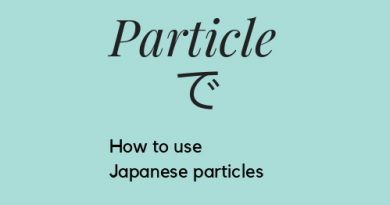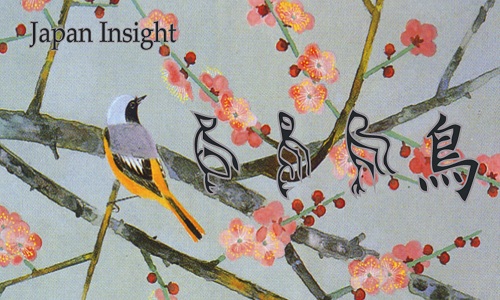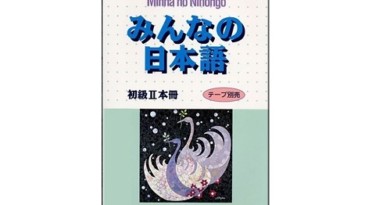Contents
Learn minna no nihongo lesson 33
3. Grammar
Command form
Group I: Vう → え
歩く → 歩け
言う → 言え
急ぐ → 急げ
Group II: Vる → Vろ
食べる → 食べろ
見る → 見ろ
Group III:
する → しろ
くる → こい
Meaning : command somebody to do something
Prohibition form
Add な after word belonging to any group.
休む → 休むな
食べる → 食べるな
する → するな
くる → くるな
Meaning : prohibit from doing something
How to use Command form and Prohibition form
– Use to force someone to follow a certain behavior. It is often used by men, especially by older people or superiors.
– Use in case of shouting commands in maneuvers, sports meeting or emergency situations.
– Use to cheer in sports.
– And use for signs or prohibitive signs.
~ Vしなさい
Meaning :order someone to do something
Usage : Give orders, requests but the degree is lower than the command form. It is usually used by women.
Vます → Vしなさい
Example :
食べます → 食べなさい : Eat it.
~~ と読みます
~~ と書いてあります。
Meaning :
~~ と読みます : is pronounced as ~
~~ と書いてあります : It says, It is written ~
Example :
この漢字は何と読みますか。
kono kanji ha nanto yomimasuka.
How do you read this kanji?
あそこに「とまれ」とかいてあります。
asoko ni “tomare” to kaite arimasu.
It says “stop” over there.
は という意味です。
Meaning : means ~
Usage : Use to explain
「立ち入り禁止」は入るなという意味です。
“tachiirikinshi” ha hairuna toiu imi desu.
“Tachiirikinshi” means “No trespassing”
Plain form といっていました。
Meaning : (someone) said that ~
Usage : convey what the third person said
Example :
秋さんは「明日休みます」と言っていました。
Aki san wa “ashita yasumimasu” to itte imashita.
Aki said, “I will be absent tomorrow.”
Plain form + とつたえていただけませんか
Meaning : Could you please tell (someone) that ~
Usage : Ask someone to convey a message in a polite way
Example :
秋さんに「明日いけません」と伝えていただけませんか。
Aki san ni “ashita ikemasen” to tsutaete itadakemasenka.
Could you tell Aki that I can’t go tomorrow?
4. Kaiwa
これは どういう 意味ですか。
kore ha douiu imi desu ka.
ワット: すみません。わたしの 車に こんな 紙が はって あったんですが、この 漢字は 何と 読むんですか。
Watto: sumimasen. watashi no kuruma ni konna kami ga hatte attan desu ga, kono kanji ha nanto yomun desu ka.
大学職員:「ちゅうしゃいはん」です。
daigaku shokuin: “chuushaihan” desu.
ワット: ちゅうしゃいはん・・・・・、どういう 意味ですか。
Watto: chuushaihan….., dou iu imi desu ka.
大学職員: 車を 止めては いけない 場所に 止めたと いう 意味です。
daigaku shokuin: kuruma wo tome te ha ike nai basho ni tome ta to iu imi desu.
大学職員: ワットさん、どこに 止めたんですか。
daigaku shokuin: watto san, doko ni tome tan desu ka.
ワット: 駅の 前です。雑誌を 買いに 行って、10分だけ・・・・・。
Watto: eki no mae desu. zasshi wo kai ni okonatte, 10 fun dake……
大学職員: そりゃあ、駅の 前だったら、10分でも だめですよ。
daigaku shokuin: sorya a, eki no mae dattara, 10 fun demo dame desu yo.
ワット: これは 何と 書いて あるんですか。
Watto: kore ha nanto kai te arun desu ka.
大学職員:「1週間以内に 警察へ 来て ください」と 書いて あります。
daigaku shokuin: 1 shuukan inai ni keisatsu he ki te kudasai’ to kai te ari masu.
ワット: それだけですか。罰金は 払わなくても いいですか。
Watto: soredake desu ka. bakkin ha harawa naku te mo ii desu ka.
大学職員: いいえ、あとで 15,000円 払わないと いけません。
daigaku shokuin: iie, ato de 15 , 000 en harawa nai to ike mase n.
ワット:えっ。15,000円ですか。
Watto: e.. 15 , 000 en desu ka.
ワット: 雑誌は 300円だったんですけど・・・・・。
Watto: zasshi ha 300 en dattan desu kedo……
Translation:
What does this mean?
Watt: Excuse me. There was a piece of paper pasted on my car. How do you read this kanji?
University staff: It’s “Chuusha ihan”.
Watt: Chuusha ihan…. What does it mean?
University staff: It means that you parked your car at a place where you shouldn’t.
Mr. Watt, where did you park?
Watt: I parked my car in front of the station. I went to buy a magazine, it’s only 10 minutes…..
University staff: Well, you can’t park in front of the station even it’s only 10 minutes.
Watt: What does this say?
University staff: It says “Please come to the police station within a week.”
Watt: Is that it. Can I not pay the fine?
University staff: No, you have to pay 15,000 yen later..
Watt: Eh, 15 000 yen? The magazine is only 300 yen…
Please see the renshuu section on the next page.


